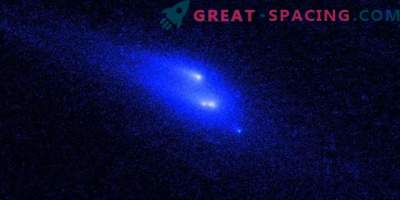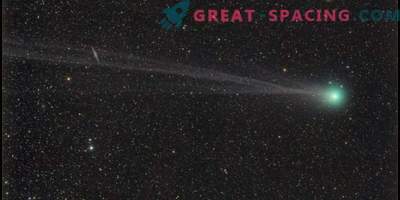
This is an artistic interpretation of Umuamua, the first interstellar asteroid, found on October 19, 2017 using the Pan-STARRS 1 telescope (Hawaii). Further review in the Very Large Telescope (Chile) showed that the object travels in space for millions of years. It seems dark red and elongated at 400 m
Scientists have succeeded for the first time to consider an asteroid arriving in our system An overview of the Very Large Telescope and other observatories showed that the unique sky rock has been moving in space for millions of years and accidentally approached our territory. It has a dark red color and elongated shape, as well as a high concentration of metal.
For the first time, the Pan-STARRS 1 (Hawaii) telescope caught the faint light point on October 19, 2017. She looked like a fast moving small asteroid. But additional reviews allowed us to determine the exact orbital path and it turned out that the body does not belong to our system. It was previously believed that this is a comet, but later failed to capture the cometary activity. The object was named 1I / 2017 U1.
The Very Large Telescope was immediately attached to the observations in order to accurately determine the orbit, brightness and color. The rate was strongly influenced by research because the object was quickly removed.
Scientists were the first to study an asteroid from interstellar space. Very Large Telescope showed that the object has been traveling for millions of years. It looks dark red and elongated For the review, the FORS instrument on the Very Large Telescope with four different filters was used. Brightness varied greatly due to axial rotation at 7.3 hours. This means that the asteroid is extremely elongated (length is 10 times the width), and also endowed with a dark red color, which is why it is similar to the objects of our system.
All the characteristics suggest that we have a dense, possibly rocky body with a high level of metal. It does not have a remarkable amount of water or ice, and the surface is redder due to the influence of cosmic rays. Drawn at about 400 m.
The animation shows the route of the interstellar asteroid through the solar system
Orbital calculations showed that the object could come from Vega. But the speed of 95,000 km / h says that the asteroid was there 300,000 years ago. Most likely, the asteroid may not communicate at all with a particular system and has been freely rushing through space for millions of years.
There is also an assumption that such wanderers visit our system once a year, but the first was noticed only with the advent of the powerful Pan-STARRS telescope.
The animation shows the interstellar asteroid Umuamua. In appearance it appears reddish and elongated











































